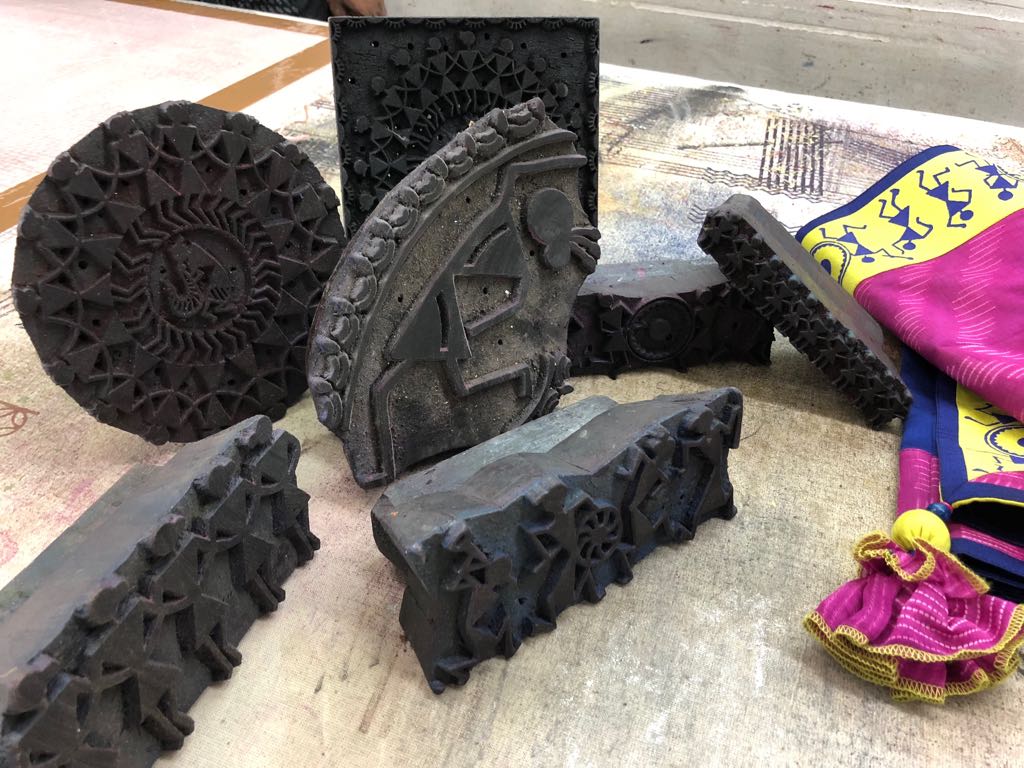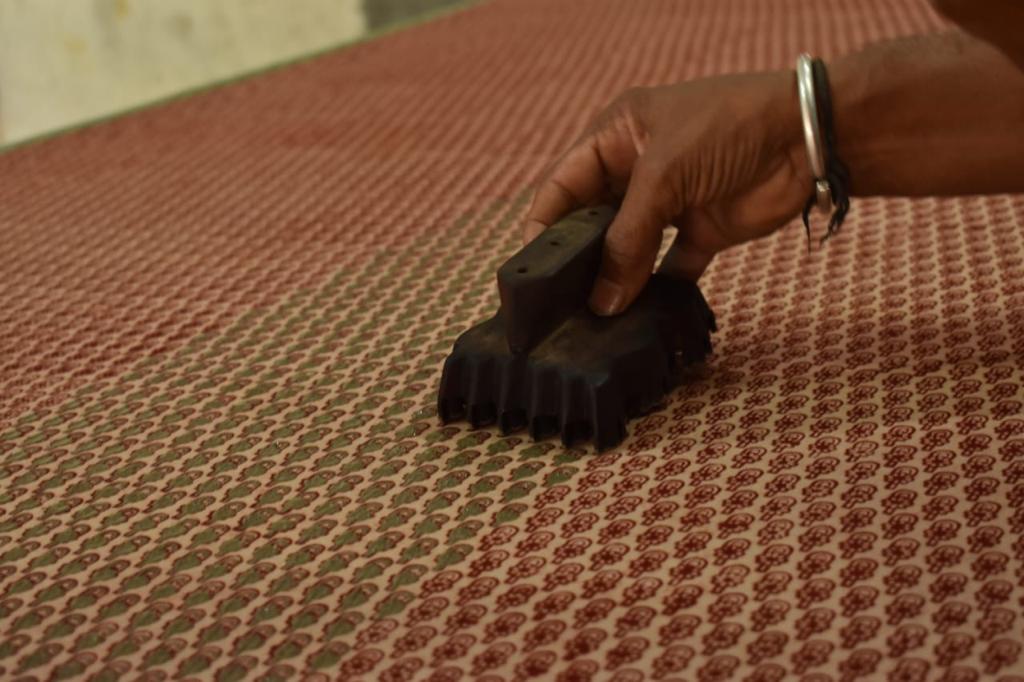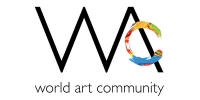Amongst the art and craft traditions of our country that have stood the test of time and continue to evolve in a contemporary avatar – is the craft of Block Printing.
Block Printing is the process of hand printing on a piece of paper or fabric using a carved wooden block dipped in dye or paint.
But first – a set of motifs or a design is carved into a wooden block or a raised design is created using metal strips or pins. The raised area of the block is dipped into ink or dye and then pressed on to a piece of cloth or paper to create patterns.
In India – the age-old craft of block printing finds expression in different forms in different regions of the country that include Kalamkari from Andhra Pradesh, Dabu and Sanganeri from Rajasthan, Ajrakh from Gujarat, Bagh from Madhya Pradesh and more. Each form of block printing has been painstakingly perfected by skilled craftspersons and has its own distinctive colour palette and motifs that set it apart.

The History of Block Printing
Small fragments of Indian block printed fabric have been found in the ruins of the Egyptian civilisation. Art historians also say that block printed fabrics date back to the Indus Valley Civilisation – roughly between the years 3500 BC to 1300 BC – and it is based on the discovery of needles, spindles and dyed cotton fibre excavated from the ruins of Mohenjo Daro. It’s also easy to join the dots and understand that there must have been a flourishing trade in the export of Indian block printed textiles.
The art of block printing was further encouraged and developed under the patronage of the Mughals and saw the creation of a number of motifs which are still in use in today’s times.
The Block Printing Process

The block printing process is detailed and tedious. The blocks themselves need to be crafted with love and care and take anywhere between 10-15 days to be made. Created using wood such as teak, blocks are intricately carved by hand in myriad intricate designs. Those designs are first made using chalk paste or a pencil on paper. After etching the design onto the wooden surface – the blocks are soaked in oil for 10-15 days to soften the hard timber.
The block printing process actually begins with lengths of cotton fabric that are washed to remove any starch. Any tie-dyeing required is done at this stage. In case a fabric is dyed – the washing ensures removal of any excess colour. After being sun-dried, the fabric is stretched taut and pinned on the printing table. In parallel – colours required for printing are prepared and kept ready on a tray containing glue and pigment binder. This ensures a soft base for the colour and ensures even spreading on the block surface.

The prepared blocks are dipped in the colours and then pressed on to the fabric. This process is repeated until the design is completed across the length and breadth of the fabric. Precision is required to be displayed by the artisans to ensure there are no smudges or breaks in the motifs and across the final design. If there are multiple colours or designs – they are created using different blocks. They can used only once the original printed surface is dry.
The printed fabrics are then left to dry in the sun and rolled up in newspaper sheets to prevent sticking. Finally, the fabric is steamed, washed, dried and ironed before it can be packed for sale or use.
What makes Block Printing Unique

Block printing is labour intensive and demands long hours of physical effort and attention to detail. In the effort that is taken to transfer an impression from block to fabric – even the tiny imperfections and variations created in the process create character and charm that is otherwise difficult to find.
Contemporary Expressions in Block Printing

Any piece of block printed fabric that’s handmade with so much effort, precision and love is what we all appreciate over mass-produced, machine made stuff. The amazing and sustainable technique of hand-block printing finds favour with a lot of our artistic partners who use it to fashion not just apparel, wraps, bed and home linen but also offbeat stuff such as bags, note books, coasters, fashion jewelry, art prints and more .
Discover the rich tradition of block printing with us.
